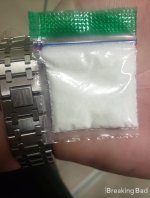3-Methylfentanyl is an old compound, going back to 1973 and 1974. It has been actually detected on street markets from time to time, not too often.
The compound (as cis/trans mixture) is relatively easy to synthesize, for those who know how to do it.
First, 2-phenylethylamine adds to methyl methacrylate (or its ethyl ester analogue) (aza-Michael addition), which stops spontaneously when complete (there is no second addition). Then the resulting mono-adduct is reacted directly with methyl acrylate, or its ethyl ester analogue, (which represents the second aza-Michael addition), and the obtained amino-diester is subjected to Dieckmann condensation (there are some simple, highly efficient, newer protocols for this condensation.) After acid hydrolysis/decarboxylation (20% HCl or 50% H2SO4), the resulting 3-methyl N-(2-phenylethyl) piperidone (obtained in high overall yields) is used for the reductive amination with aniline (with NaBH3CN or NaBH(AcO)3. The cis/trans mixture is obtained in ~6:4 -7:3 ratio, in moderate yields. (There are better reducing agents, not mentioned here).
The cis/trans mixture of the intermediate is the problem, as it is not easy to resolve, apart from chromatography. (There are some crystallization procedures). The potency of +/- cis 3-MF is about 8 X fentanyl and the effect lasts much longer, up to 12h, as opposed to fentanyl (1-2h). Only + enantiomer is active, - is not. The +/-trans 3-MF is much weaker, about fentanyl itself. It is an unwanted isomer, and there is a need to remove it. (If present in significant amounts, it obviously decreases the potency). The synthesis is completed using propionyl chloride (less preferably propionic anhydride), and the product is precipitated as an oxalate salt (unlike fentanyl, which is monocitrate salt). It is not encountered that often on the streets, because the synthesis is actually more complex than described above (the procedure must be known and understood in detail). Also, cis-trans separation of the mixture is laborious and the trans isomer is lost, i.e. discarded. (Detailed large-scale procedures might be available for the professionals, at a very high cost).
Benzyl 3-methyl fentanyl, is not a practically usefull precursor of 3-MF, unless someone has no access to 2-phenylethylamine or its precursor, benzyl cyanide. Even then, there are workaround methods.
The fact is, +/- cis 3-methyl fentanyl is a quite lethal substance, unless diluted and dosed properly (only experts can do that, even than sensitive individuals can overdose and die, due to the respiratory depression, i.e. stop of the spontaneous breathing, just as it is the case with heroin).
It is entirely different matter what the users actually encounter on the markets. It need not to be 3-MF at all, more likely fentanyl or even some of the nitazenes.
There are no any simple means of knowing what the contents of the mixture are.


